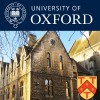Circulation for Intervention: The Comic, the Folk and the Democratic in Marathi Theatre
As their names suggest, Marathi theatre productions Yada Kadachit (If At All, 2000) and Yada Kadachit Returns (If At All Returns, 2019), written and directed by Santosh Pawar, manifest circularity of a kind that is observed not in the comic style of performance merely but in their potential to intervene in the public/theatrical discourses. In this respect, the times of opening of these productions are significant. Yada Kadachit appeared after Babri Masjid was demolished, liberalisation was introduced and the right wing Hindutva permeated every walk of life; while Yada Kadachit Returns opened after the right wing Hindutva was reelected to power in 2019. Both the plays do not shy away from presenting a vibrant and comic combination of mythical/cinematic characters that are borrowed selectively from distinctly different sources like epic (Mahabharata)to the popular recent Indian epic action film (Bahubali: The Beginning [2015]). Irrespective of their narrative times, historical/contemporary presence, orientation and style of depiction in the original story; the de-mythologized characters get worried about contemporary social issues like corrupt politics and farmer suicides. Unlike the stereotypical Marathi theatrical emphasis on the stability of the written word, everything in these plays appears to be on move. While actors literally move on the stage - jumping, singing and dancing constantly; various time-lines intersect and references to political and social happenings fly all over keeping the performances ever in motion and letting new meanings to develop continuously. Such mobile and circulatory nature of the performances invites the analytical concept of circulation in many senses. Use of the 'Naman Khele' folk form projects the two productions as sites of circulation apart from providing a new interface between folk performance traditions and proscenium theatre tradition in Marathi.
Circulation works in myriad ways here: from narrative flows to the real, physical movements, from mundane props put to creative use to circulating inner and outer contexts, and to various narrative times circulating in a loop, etc. It operates to create space, to copy and downsize things in order to make them transparent, simultaneous and relevant. The entire exercise of performance does not simply circulate knowledge but creates different knowledge. Moreover, the unrepresentative nature of the productions invites reflection on the idea of circulation-as-intervention or circulation-for-subversion. Within ambit of the performances, the primary function of circulation may be identified as generation of comic laughter, yet the socio-political criticism and a much required emphasis on democratic principles achieved through it nonetheless contribute to public discourse around contemporary matters and invite a rethinking of possibilities of Marathi theatre.
The broader field of South Asian social history including history of the book projects, discourse on development of science, and historical and social developments, has seen analytical studies [Subrahmanyam (2015), Orsini and Sheikh (2014), de Brujin and Busch (2014) etc] that use the concept of circulation remarkably but the application is mostly reserved for the early modern period. This research, however aspires to expand the application to a less explored field called Marathi theatrical discourse and more importantly, to contemporary times and developments.




